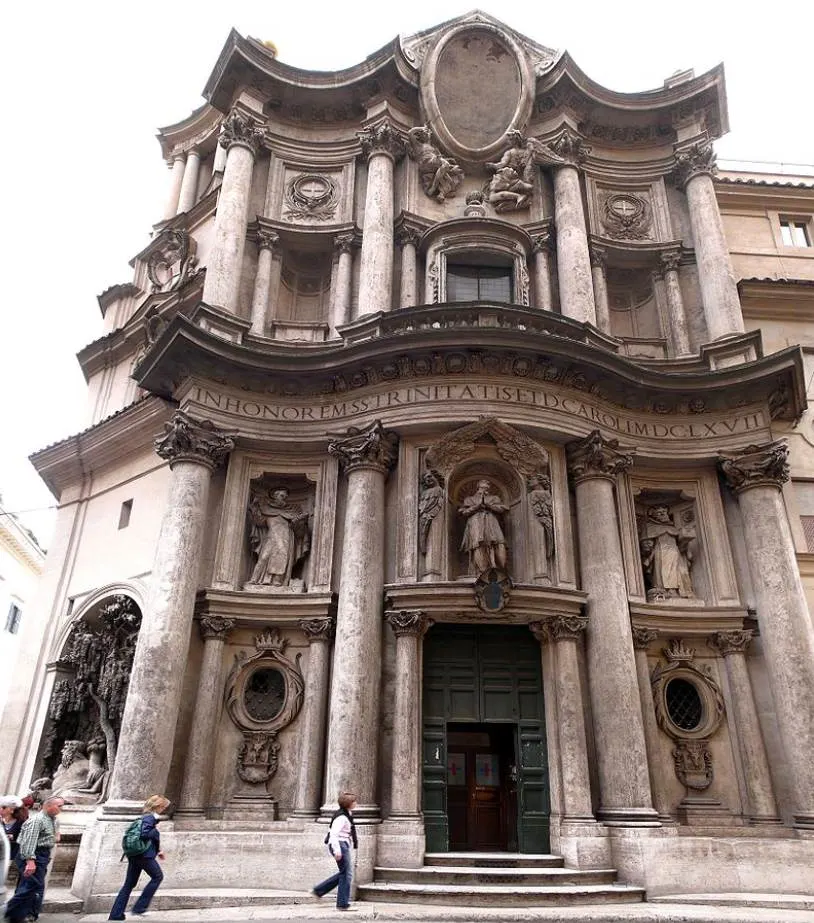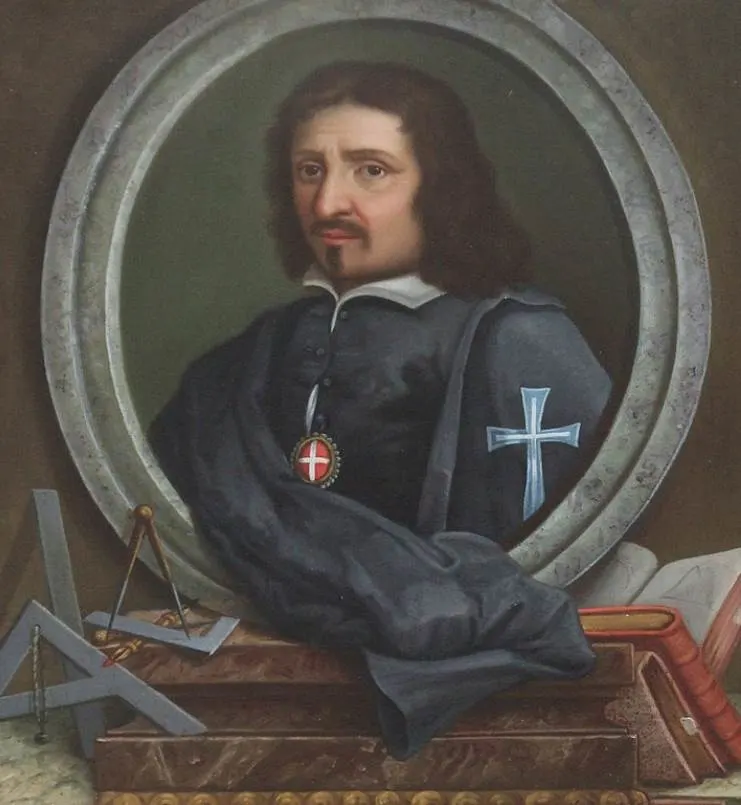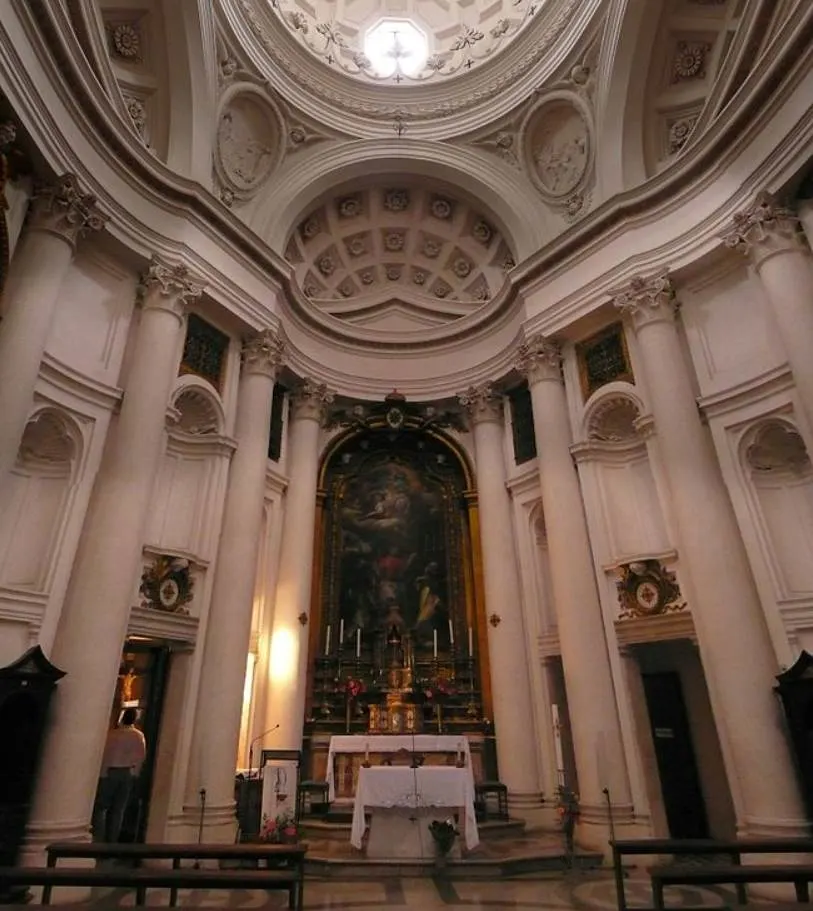When Spanish members of a religious order in Rome wanted a new church, they commissioned it to a man who would become one of the leading Baroque artists of the 17th century.
This makes it no surprise that the Baroque building he designed became one of the most remarkable examples of Baroque architecture in Rome, although it’s a relatively small structure.
Let’s take a closer look at some of the most interesting facts about San Carlo alle Quattro Fontane, a remarkable church in the heart of the Italian capital.
1. It’s located on one of Rome’s Seven Hills
The church of San Carlo alle Quattro Fontane is one of the architectural highlights in Rome. It’s located on Quirinal Hill which borders the northeastern edge of the city center.
This is one of the Seven Hills of Rome and the location of the immense Quirinal Palace, a historic building that serves as the official residence of the President of Italy.
Quattro Fontana refers to 4 Late Renaissance fountains that were installed on the nearby square between 1588 and 1593. The church can be found on the southwest corner of this square.

2. It was commissioned by a religious order in the 1630s
The church was commissioned in the year 1634 by the Spanish members of the religious order known as the “Trinitarians.”
This order was founded by a man referred to as “Brother John” in the 12th century who was on a mission to free Christians who were held captive by Muslims at that time. This eventually evolved into the devotion of the Holy Trinity from which the order got its name.
This order had a very influential and rich patron by the name of Cardinal Francesco Barberini. He had just bought the Sforza Palace on the Quirinal Hill which he completely renovated and turned into the Barberini Palace.
3. It was the debut of a famous architect for a particular reason

The architect of the church was Francesco Borromini (1599-1667), a man who is now considered to be the leading Baroque architect of the 17th century together with his colleague Gian Lorenzo Bernini (1598-1680).
Although both Bernini and Borromini worked on the expansion of the nearby Palazzo Barberini, only Borromini is credited with the design of the church of San Carlo alle Quattro Fontane.
Better yet, this was the first commission he received as a sole architect following the death of his master Carlo Maderno (1556-1629), the man who designed the Baroque façade of St. Peter’s Basilica.
He didn’t earn a penny for completing his first solo project because he offered his services for free. This proved to be a great strategy as the remarkable design he produced resulted in numerous other commissions.

4. The small structure was completed in just 8 years
Although the building only has a length of 20 meters (66 feet) and a width of 12 meters (39 feet), it’s considered to be one of the ultimate masterpieces of Roman Baroque architecture.
Francesco Borromini worked on the design for a couple of years and construction started 4 years after he was awarded the commission in the year 1638. The cloister and adjoining monastic buildings were completed first between 1638 and 1641 and the church itself was consecrated in 1646.
5. The complex interior is what makes this church unique and special
The location of the church was quite complicated because it was built on the corner of two intersecting roads, the Strada Pia and the Strada Felice. This meant that the architect had to be creative to overcome the lack of space.
He completely abandoned the symmetrical forms of Renaissance buildings and instead combined various geometric forms. These intertwine perfectly on different levels of the church which makes it appear as if the walls twist unusually.
This remarkable plan eventually culminates into a fascinating dome that has one of the most remarkable geometrical patterns you’ll ever come across.

More interesting facts about San Carlo alle Quattro Fontane
6. The church was dedicated to a Milanese 16th-century Archbishop and Saint named Charles Borromeo. He became a saint because of his efforts during the Counter-Reformation, the reaction of the Catholic Church against the Protestant Reformation of the 16th century.
There are at least 2 more churches dedicated to this Saint including Sant’Ambrogio e Carlo al Corso and an Early Baroque church called San Carlo ai Catinari.
7. The church is so small that it’s estimated that the entire structure could fit within the dome of St. Peter’s Basilica, the largest church in the world located in Vatican City.
8. The interior of the church isn’t the only remarkable element of the church’s design. The serpentine façade is another feature that makes it stand out among the copious amount of astounding churches in Rome.

Although Francesco Borromini is credited with the design of this façade, only the first level was completed when he passed away in the year 1667. That’s because financial problems arose when Francesco Barberini pulled the plug on the funding.
9. The architect completely moved away from the symmetrical and often rectangular shapes of Renaissance structures that were built in the 16th century. He introduced ovals and curves, unthinkable elements just a century earlier.
10. There are several chapels inside the church, including an octagonal one that emphasizes the importance of the first commission of the architect.
This octagonal chapel, which is located in the southeastern corner of the crypt, was the intended location for the architect to be buried.
After suffering from severe depression in the final years of his life, he committed suicide and was buried under the dome of San Giovanni dei Fiorentini, a church largely designed by Giacomo della Porta and Carlo Maderno, the architect’s master.

